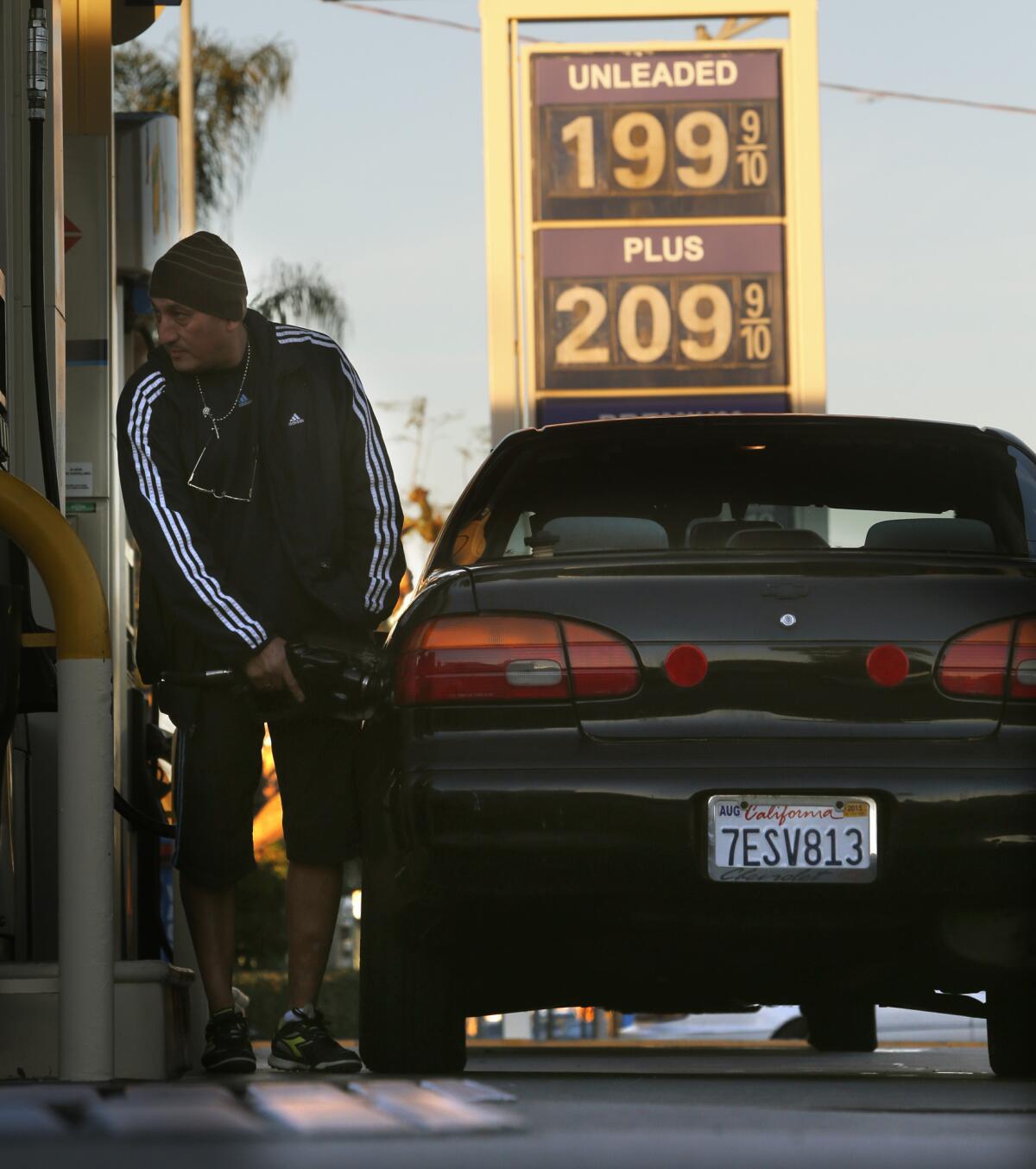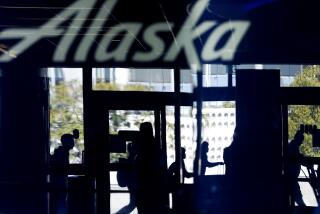On the Spot: Airfares stay sky high despite oil price drops

Question: I’m frustrated that airfares have not followed the decline in oil prices over the last few months. Airfares certainly followed oil prices as they rose last year. Have mergers eliminated competitive tension between the remaining carriers to the detriment of consumers?
Tom Cook
Topeka, Kan.
Answer: In the L.A. area, we’re paying about $1.11 less for a gallon of gas at the pumps than we were last year at the same time, according to AAA’s Fuel Gauge report. When I’m filling the car, I’m tempted to shake my fist and say, “C’mon, airlines, you big bunch of ….” You can fill in that last part.
Cursing those culprits might temporarily alleviate my angst, but experts remind me that it’s not that simple. Nothing about airlines or airfares is.
Seth Kaplan, managing partner and an analyst with Airline Weekly, an industry publication, started realigning my thinking with this analogy: “It’s just like if you’re running a diner, and the prices of flour, butter and eggs drop. You don’t just drop the price of your pancakes with no other reason to do so. For the moment, at least, you just benefit from the drop in those cost inputs, and you become more profitable.”
Until recently, “airlines” and “profitable” haven’t been a natural, never mind economic, pairing, but things are turning around, thanks partly to the gold mine of fees from passengers who insist on traveling with, say, luggage, and partly to a decrease in capacity, competition and maybe fuel prices.
“Airline prices … are more driven by supply and demand as opposed to cost,” said Jonathan Kletzel, U.S. transportation leader for PricewaterhouseCoopers. If an airline decides that the cost of flying from, say, L.A. to Cincinnati outweighs the benefit, it may reduce the frequency of flights or eliminate the route. With fewer planes in service, the equation becomes more difficult, but rest assured, part of the difficulty is not fliers’ needs, which don’t figure into the math to any great degree.
“The last three years [the airlines’] mantra has been ‘capacity and discipline,’” said James Brock, professor of economics at Miami University in Ohio.
Capacity and discipline are reflected in load factors from the Bureau of Transportation Statistics: In 2002, airlines flew about 70% full. In the first 10 months of 2014, airlines flew nearly 85% full. Recent incidents of bad behavior on airplanes suggest that “behavioral sink” — which describes descent into chaos attributed to space constraints — may not be confined just to the study of the rats whose actions gave rise to the term.
Still, if fuel is as much as 50% of an airline’s budget, doesn’t that give us cause for some hope of cost cuts?
It’s possible if competition heats up on certain routes. In terms of reducing prices, it’s a bit of a game of airfare chicken. Bruce Bullock, the director of the Maguire Energy Institute at the Cox School of Business at Southern Methodist University in Dallas, thinks fare reductions could occur, but that’s a “matter of who’s going to go first.” Bullock also says these low fuel prices probably aren’t sustainable throughout 2015.
If the airlines’ mantra is “capacity and discipline,” perhaps the leisure traveler’s mantra — for now — should be “road and trip,” a form of travel that doesn’t penalize you for canceling a flight or carrying a bag and doesn’t require you to follow a timetable set by a descendant of the Marquis de Sade. Ladies and gentlemen, start your engines?
Have a travel dilemma? Write to travel@latimes.com. We regret we cannot answer every inquiry.
More to Read
Sign up for The Wild
We’ll help you find the best places to hike, bike and run, as well as the perfect silent spots for meditation and yoga.
You may occasionally receive promotional content from the Los Angeles Times.







